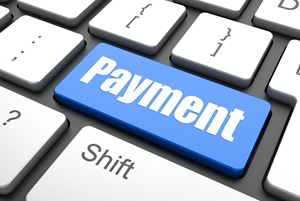
Processing bills is time-consuming, and therefore relatively expensive when considering all of the handling and paperwork. Here are 6 ways to make the bill paying process run more efficiently:
- Keep business and personal accounts completely separate. For both checking accounts and credit cards, having a separate account for business-only saves time when sorting the monthly expenses for payment. Using a business credit card for expenses also means fewer bills to pay, and some cards will reward cardholders with a percentage of purchases redeemable for cash. However, it’s very important to pay off the credit card bill every month. Paying interest on credit cards defeats the purpose of streamlining the process – any savings are quickly consumed by double digit interest rates.
- Auto-debit recurring expenses. Rent, utilities, insurance, and other regular monthly bills are predictable expenses. Sign up for or ask vendors for a bank draft or autopay option. Remember to enter the auto payment into the accounting system for the date of withdrawal. Save time, supplies, and postage, and keep money in the account for as long as possible until the due date arrives. Many accounting systems also feature an auto-entry or memorized transaction feature which can automatically enter these transactions on the recurring date, further saving time.
- Verify invoices before paying. Paying incorrect or fraudulent bills, or double-paying a bill (yes, it happens) is an obvious drain on resources. Implement a three-way matching process on all your payables, especially those related to inventory. The ‘three-way’ refers to the documents involved in accounts payable:
- Purchase order
- Packing slip
- Invoice
Before any invoice is paid, match these three documents line by line – for quantity, price, and description — to ensure accuracy. Only then should the bill be approved for payment.
- Manage vendor payments. Work the float by paying as late as possible, but not going crazy with check runs. Many companies make only two check runs per month, while others seem to have fire drill after fire drill and cut checks two to three times each week. Manage payments by having a best-practices policy, such as, “Our next check run is X and you’ll be in that stack, guaranteed.” Don’t get in the position of having poor cash management or payment history, which causes vendors to demand payments or enforce late fees. An example policy: check runs on the 10th and 25th pay ALL bills due on or before the 15th and 30th to allow time for mailing. Bills must be received by the 5th and 20th in order to be included on the 10th and 25th; if received late they will be included in the subsequent run. Emergencies will always come up, but most often they can be anticipated and accommodated.
- Pay bills electronically. Businesses have affordable options for sending and receiving electronic payments. The set up takes time, but it’s typically free. Two options are PayPal and the Intuit Payment Network (IPN). Simply add bank account information, and easily transfer funds between two accounts just by knowing the receiver’s email address. The minimal cost of electronic payments is easily justifiable when considering the savings on paper checks, envelopes, postage, and of course, time and labor.
- Create a buffer in the account. Moving money from one checking account to another to cover bills and payroll takes up valuable time and adds stress to the bill-paying process. Keep an acceptable cushion in the primary account to reduce transfers and eliminate the possibility of insufficient funds. Set up the cushion so that the funds don’t ‘look’ available.
More A/P Ideas
These are only six of many ways to reduce processing costs and save time on accounts payable processing. Give these suggestions a try, and if you’d like to know more, please let us know.

Should I Use The Same Company for CFO and Bookkeeping Services or Keep Them Separate?
by Lucrum Staff Is your company considering outsourcing fractional CFO and bookkeeping services to two different companies? Using a single provider for …

Do I Need a Fractional CFO, Interim CFO or Part-Time CFO? What’s the Difference?
by: Lucrum Staff As a business scales, it reaches a point where more financial expertise is needed than existing resources can provide. …

When To Politely Turn Down A New Business Opportunity
By: Jeff Heybruck New business opportunities are, for good reason, exciting. But wise business leaders are able to take off the rose-colored …
